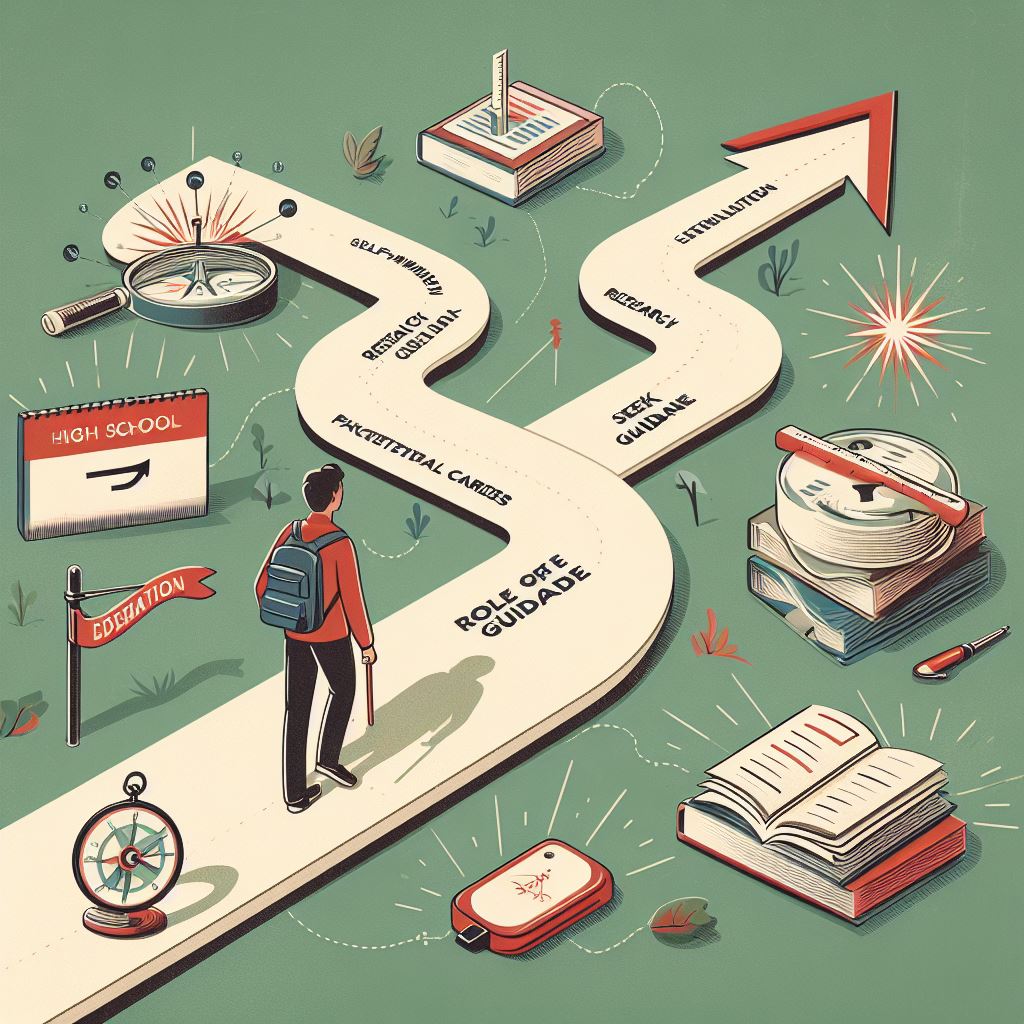
Choosing a Career in School: A Comprehensive Guide
Deciding on a career path while still in school can be exciting and intimidating. With so many options available, it’s natural to feel uncertain about where to start. But beginning this journey early can make all the difference, helping you explore your interests, understand your strengths, and set the foundation for a fulfilling future.
This guide supports you through every step, offering insights into why early career planning matters and giving you practical tips to make thoughtful, confident choices about your future.
The Importance of Early Career Planning
Why Start Early?
-
Forward-Thinking: Early career decision-making equips students with a clear vision for their future. This proactive approach helps academically and mentally prepare students for their chosen path.
-
Future Success: Statistics and research indicate that students who start their career planning in school are more likely to be successful. The old saying goes, “A stitch in time saves nine.” The earlier you plan, the more prepared you are.
-
Reduce Anxiety and Uncertainty: Being uncertain about the future can be a significant source of anxiety. Early career planning helps reduce this, ensuring students are confident and focused on their goals.
Quote: “The future depends on what you do today.” – Mahatma Gandhi
Case Study: Jennifer's Journey
Jennifer, a former high school student, began her career exploration in her sophomore year. She attended various vocational guidance seminars, spoke with career counselors, and interned during summer breaks. Today, Jennifer is a successful environmental scientist, a decision she attributes to her early career planning during school.
Available Resources and Tools in Schools for Career Exploration
Schools today are well-equipped with tools and resources for students. Here are some:
-
Career Assessment Tests: These tests evaluate a student's strengths, interests, and potential career matches.
-
Vocational Guidance Seminars: Professionals from various fields share insights about their professions.
-
Internship Opportunities: Gaining hands-on experience in potential fields can offer clarity.
-
Career Libraries: Books, magazines, and online resources offer in-depth knowledge about different professions.
Steps and Techniques to Understand Your Calling

1. Self-Evaluation
-
Interests and Passions: List out activities or subjects that excite you.
-
Strengths and Skills: Identify areas where you excel and feel confident.
2. Research Potential Careers
-
Use the "Tools and resources for career exploration for students" provided by your school.
-
Engage in job exploration online to understand the profession's day-to-day tasks.
3. Seek Guidance
-
Connect with career counselors for professional advice.
-
Speak to mentors or professionals in fields of interest.
Role of Guidance in Career Selection
It's essential to acknowledge the role of career counselors, mentors, and professionals in shaping a student's future. These experts:
-
Offer unbiased vocational direction.
-
Provide insights into the evolving job market.
-
Aid in occupational mapping, ensuring students' skills align with their chosen profession.
Case Study: Alex's Exploration
Alex was passionate about both literature and technology. With the help of career guidance, he ventured into digital storytelling, merging his love for both domains. Today, Alex creates compelling narratives for virtual reality platforms.
Conclusion: Your Path Awaits
Every student has unique strengths and passions. You can make informed choices about your future profession by harnessing the resources available and seeking timely vocational direction. Remember, the journey of choosing a career path is as crucial as the destination itself.
Your career is a journey of learning and growth. Embrace every opportunity, seek guidance, and believe in your potential.
Rita's Quest: Finding the Right PathOnce, in the quiet town of Riverview lived a 17-year-old girl named Rita. Like many her age, she often gazed at the stars and pondered her future. "What am I meant to do? How can I find my path?" she wondered. One day, on her way home, Rita found a mysterious compass with inscriptions on it. The compass pointed towards the town library, and she was intrigued. She decided to follow its direction. At the library, the compass led her to an ancient book titled "Guide to One's Destiny." As she opened it, the pages turned themselves to a section named "Self-Evaluation." The words advised her to list activities or subjects that ignited her spirit. Rita thought about her love for nature and ability to express herself through art. "Perhaps something that merges both?" she pondered. The compass pointed her toward the digital archives, where she could "Research Potential Careers." Here, she discovered the world of environmental design. Excited, Rita decided she needed more practical knowledge. She sought out Mr. Grayson, the town's renowned environmental architect, to "Seek Guidance." Mr. Grayson, having noticed her enthusiasm, shared stories of his projects, giving Rita an understanding of the profession. One evening, as they reviewed blueprints under the dim light of his studio, Rita realized the true "Role of Guidance." It wasn't just about gaining professional knowledge and understanding one's passion in the real world. With newfound clarity, Rita began her journey in environmental design, blending her love for nature and art. As she ventured forth, she often looked back at that mysterious compass, her guide, reminding her that one can always find their path with the right tools and guidance. And so, in the heart of Riverview, Rita's journey became a beacon for many, a testament that with the right steps, one can illuminate their destined career path. |





